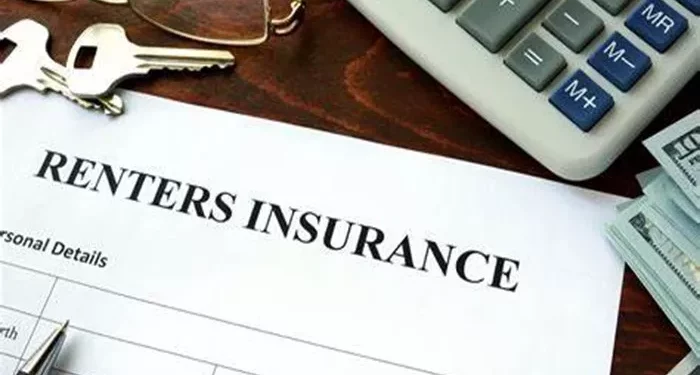Rental property insurance is a crucial aspect of property ownership and management. It provides financial protection against a wide range of risks and uncertainties that landlords may face. Understanding the cost of rental property insurance is essential for landlords to make informed decisions and budget effectively.
Factors Affecting the Cost of Rental Property Insurance
1. Location
The location of the rental property plays a significant role in determining insurance premiums. Properties in areas prone to natural disasters such as hurricanes, earthquakes, floods, or wildfires will generally have higher insurance costs. For example, a rental property located in a coastal region where hurricanes are common may require additional coverage for wind and storm damage, which will increase the premium. Similarly, properties in areas with a high crime rate may also have higher premiums due to the increased risk of theft and vandalism.
2. Property Type
The type of rental property also affects insurance costs. A single-family home may have different insurance requirements and premiums compared to a multi-unit apartment building. Condos and townhouses may have shared walls or common areas, which can impact the insurance coverage and cost. For instance, a multi-unit apartment building may require more comprehensive liability coverage due to the higher number of tenants and potential for accidents or injuries on the premises.
3. Property Age and Condition
Older properties may have higher insurance premiums as they may be more prone to structural issues and require more maintenance. Properties in poor condition, such as those with a leaky roof, faulty electrical systems, or plumbing problems, are also considered higher risks and may result in increased insurance costs. Insurance companies may require inspections to assess the condition of the property and determine the appropriate premium.
4. Coverage Amounts
The amount of coverage chosen by the landlord has a direct impact on the insurance cost. Higher coverage limits for property damage, liability, and loss of rental income will lead to higher premiums. Landlords need to carefully consider the value of the property, the cost of potential repairs or replacements, and the potential financial losses in case of a claim to determine the appropriate coverage amounts. For example, if a rental property is located in an area with a high cost of construction, the property damage coverage limit should be sufficient to cover the cost of rebuilding the property.
5. Deductibles
The deductible is the amount that the landlord must pay out of pocket before the insurance company starts covering a claim. Higher deductibles generally result in lower premiums, while lower deductibles mean higher premiums. Landlords need to balance the deductible amount with their financial ability to pay in case of a claim. For example, a landlord with a healthy cash reserve may choose a higher deductible to save on premiums, while a landlord with limited funds may prefer a lower deductible.
6. Tenant Profile
The type of tenants renting the property can also influence insurance costs. If the tenants have a history of property damage or are considered high-risk, such as those with a criminal record or a history of non-payment, the insurance company may increase the premium. Additionally, if the rental property is used for a specific purpose, such as a short-term vacation rental or a commercial lease, the insurance requirements and costs may be different.
7. Insurance Company and Policy Options
Different insurance companies offer different rates and policy options. Shopping around and comparing quotes from multiple insurers can help landlords find the most competitive premium. Insurance companies may also offer discounts for various reasons, such as bundling multiple policies, having a security system installed in the rental property, or having a good claims history. Landlords should carefully review the policy terms and conditions, including exclusions and limitations, to ensure they are getting the coverage they need.
Types of Coverage Included in Rental Property Insurance
1. Property Damage Coverage
This coverage protects the physical structure of the rental property against damage from perils such as fire, lightning, windstorms, hail, vandalism, and theft. It pays for the cost of repairing or rebuilding the property in case of a covered loss. For example, if a fire damages the rental home, the property damage coverage will reimburse the landlord for the cost of repairing the structure and replacing damaged fixtures and fittings.
2. Liability Coverage
Liability coverage is essential for landlords as it protects them against claims of bodily injury or property damage caused by tenants, guests, or others on the rental property. If a tenant slips and falls on a wet floor in the rental unit and sues the landlord, the liability coverage will pay for the legal defense costs and any damages awarded, up to the policy limit. This coverage also extends to situations such as a tree from the rental property falling on a neighbor’s property and causing damage.
3. Loss of Rental Income Coverage
If the rental property becomes uninhabitable due to a covered loss, such as a fire or flood, and the tenants have to move out, the landlord may lose rental income. Loss of rental income coverage reimburses the landlord for the lost rent during the period of repair or rebuilding. For example, if it takes three months to repair a rental property after a major storm and the monthly rent is $2,000, the insurance company will pay the landlord $6,000 under this coverage.
4. Contents Coverage
While the landlord’s personal property used to maintain the rental property, such as tools and appliances, is covered under property damage coverage, tenants’ personal belongings are not. However, landlords can offer contents coverage as an option to tenants. This coverage reimburses tenants for the loss or damage of their personal property due to covered perils.
5. Additional Living Expenses Coverage
If the rental property is damaged and the tenants are temporarily displaced, this coverage pays for the tenants’ additional living expenses, such as hotel bills and meals, while the property is being repaired. It helps to ensure that the tenants are taken care of during the difficult period and can also protect the landlord from potential liability if the tenants are left without suitable accommodation.
Average Cost Ranges of Rental Property Insurance
The cost of rental property insurance can vary widely depending on the factors mentioned above. On average, landlords can expect to pay anywhere from $500 to $2,500 per year for basic rental property insurance coverage. However, in high-risk areas or for larger, more valuable properties, the premiums can be significantly higher. For example, a rental property in a hurricane-prone coastal area with a high property value and multiple units may have an annual insurance premium of $5,000 or more. In contrast, a small, single-family rental home in a low-risk suburban area may have a premium as low as $300 to $500 per year.
It’s important to note that these are just rough estimates, and the actual cost will be determined by the specific circumstances of each rental property. Landlords should obtain quotes from multiple insurance companies and work with an insurance agent to accurately assess their insurance needs and costs.
Tips for Reducing the Cost of Rental Property Insurance
1. Improve Property Security
Installing security features such as burglar alarms, deadbolt locks, security cameras, and motion sensor lights can reduce the risk of theft and vandalism and may qualify for a discount on insurance premiums. For example, an insurance company may offer a 5% to 10% discount if a rental property has a monitored burglar alarm system installed.
2. Make Property Improvements
Upgrading the property’s roofing, electrical, and plumbing systems can improve its condition and reduce the risk of damage. This can lead to lower insurance premiums. For instance, replacing an old, leaky roof with a new, durable one can not only protect the property from water damage but also make it more attractive to insurance companies.
3. Bundle Policies
If a landlord has multiple rental properties or other insurance needs, such as homeowner’s insurance or auto insurance, bundling the policies with the same insurance company can result in significant discounts. Insurance companies often offer multi-policy discounts to encourage customers to consolidate their insurance business.
4. Increase Deductibles
As mentioned earlier, choosing a higher deductible can lower the insurance premium. However, landlords should ensure they have the financial means to pay the deductible in case of a claim. For example, increasing the deductible from $500 to $1,000 may result in a 10% to 20% reduction in the annual premium.
5. Screen Tenants Carefully
Selecting reliable and responsible tenants can reduce the risk of property damage and liability claims. Conducting thorough background checks, including credit checks, criminal history checks, and rental history checks, can help landlords identify good tenants. Insurance companies may consider a landlord’s tenant screening process when determining premiums.
6. Maintain a Good Claims History
Making fewer claims on the rental property insurance policy can lead to lower premiums over time. Insurance companies reward policyholders with a good claims history by offering premium discounts or rate reductions. Landlords should strive to prevent losses and only file claims when necessary.
Conclusion
In conclusion, the cost of insurance for rental property is influenced by multiple factors, and landlords need to carefully consider their insurance needs and options. By understanding the factors that affect premiums, the types of coverage available, and implementing strategies to reduce costs, landlords can ensure they have adequate protection for their rental properties while also managing their insurance expenses effectively. It is advisable to consult with a professional insurance agent or broker who can provide personalized advice and help landlords navigate the complex world of rental property insurance.
Related topics:































